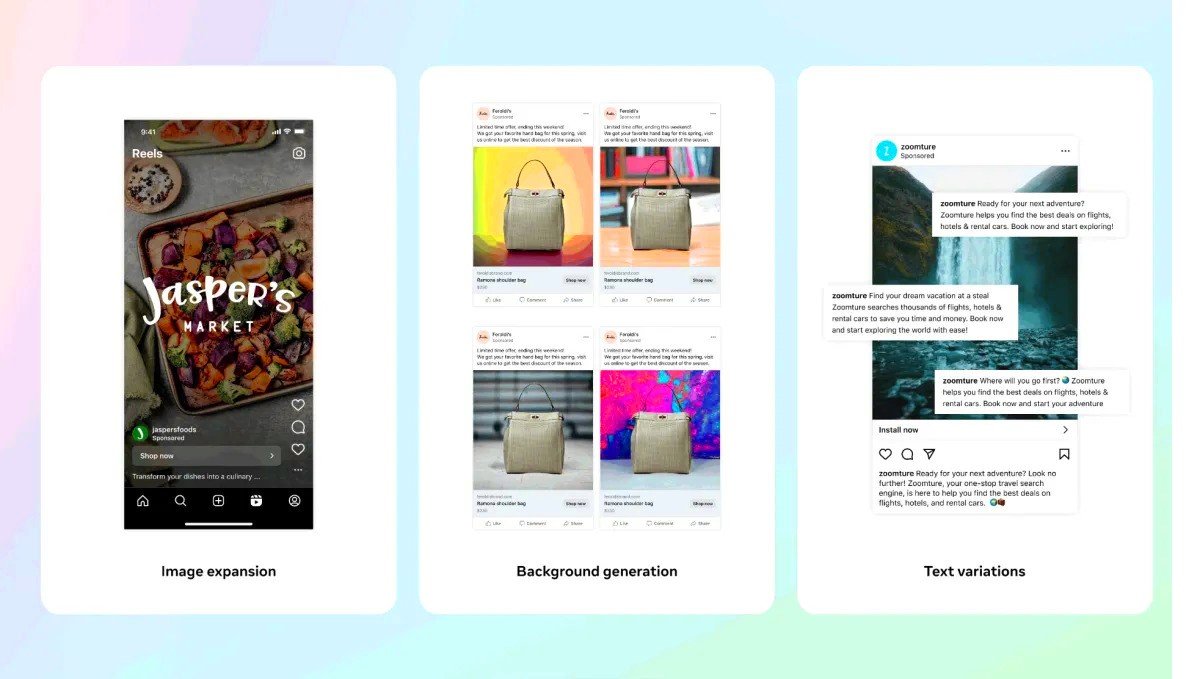Meta has unveiled an innovative leap into artificial intelligence by introducing Imagine, a cutting-edge AI image generator designed for seamless integration across desktops, mobile devices, and text prompts. This groundbreaking tool signifies a significant stride in the evolution of AI-driven creativity, offering users a distinct and versatile solution to generate high-quality images effortlessly.
Imagine transcends traditional boundaries, empowering users to unleash their imagination and transform textual prompts into visually stunning creations. With its cross-platform capabilities, Meta’s Imagine redefines the landscape of AI image generation, opening new avenues for creative expression and pushing the boundaries of what is possible in the digital realm.
Imagine, Meta’s brand-new independent artificial intelligence image creator was only recently introduced to the public. According to Android Authority, this application allows users in the United States to generate graphics using straightforward text prompts on their home computers or mobile devices.
The technology was initially limited to the Meta AI virtual assistant available within chat applications; however, it now provides a streamlined and user-friendly interface that can be accessed through imagine.meta.com on the internet.
“It has been a pleasure to hear from individuals about showing envision, the text-to-image generating component of Meta AI, to generate entertaining and innovative content in chats. According to a blog post published by Meta, “Today, we are expanding access to imagine beyond the realm of chats.”
Meta’s Own AI Image Generator
Imagine is Meta’s first attempt to democratize artificial intelligence-generated photography. It differentiates itself from more established competitors such as Midjourney and DALL-E by its ease of use and the fact that it is accessible without charge. The program’s interface consists of a text box and a button labeled “generate,” making the procedure more accessible for the typical user.
The functionality of Imagine extends to the development of images with a resolution of 1280×1280 pixels that are embellished with a covert watermark and feature the caption “Imagined with AI.”
Imagine performs inconsistently when managing various prompts and media outputs, even though it can cover some topics and produce aesthetically remarkable results. It offers a user-friendly experience for generating images using Emu, Meta’s powerful image foundation model. Additionally, it incorporates a groundbreaking feature, an undetectable and traceable watermark. This watermark is designed to increase transparency regarding the origins of the images created by artificial intelligence.
Read More: AI Image Generation Tools Increase Carbon Footprint, Study Finds
Questions About User Privacy
Arc Technica has informed us that the training data that underpins Imagine’s capabilities raises concerns regarding the privacy of its users. The artificial intelligence methodology that Meta uses to power its creative engine is primarily based on fragments of users’ publicly available photos from Facebook and Instagram. These fragments are derived from these two sites’ stunning 1.1 billion publicly visible images.
Concerns regarding including user images in the dataset continue to be raised, generating discussions about the consequences for privacy and the potential opt-out methods. Even though the company claims to use publicly available photos for training purposes solely, these worries continue to be raised.
How Meta trains its artificial intelligence models, particularly Emu, is unlike any other business. The training approach of the corporation is distinguished from that of other artificial intelligence entities because it has access to a massive amount of data from its services. In other AI entities, the collecting of data entails a combination of illegal scraping and licensed stock photos.
According to Ars Technica, Emu’s training approach, which is referred to as “quality-tuning,” places an emphasis on aesthetic alignment following pre-training by concentrating on a more limited but visually appealing selection of images for refinement.
There are ethical concerns over the program’s capability to generate erroneous or inappropriate content, even though Meta has tried to reduce the likelihood of potentially damaging outputs by utilizing filters and disclaimers.
Meta’s Imagine is a promising addition to artificial intelligence image generation. It boasts accessibility, simplicity, and the incorporation of Emu’s robust image foundation model, which makes it an attractive option.
On the other hand, the fact that it relies on data supplied by users and should be subject to ethical considerations regarding its output calls for further scrutiny as the use of AI to generate imagery grows more widespread.
Read More: Bypass Detection Review: Instantly Humanize AI-Crafted Text


